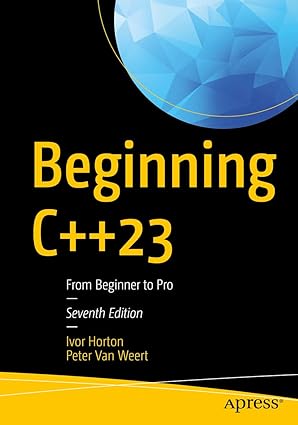Set up a Server that will receive packets from a client and send packets to a client. Also set up a Client that will send packets to a server and receive packets from a server.
[sourcecode language=”java”]/*******************************************************
* MYCPLUS Sample Code – https://www.mycplus.com *
* *
* This code is made available as a service to our *
* visitors and is provided strictly for the *
* purpose of illustration. *
* *
* Please direct all inquiries to saqib at mycplus.com *
*******************************************************/
// Server.java
// Set up a Server that will receive packets from a
// client and send packets to a client.
import java.io.*;
import java.net.*;
import java.awt.*;
import java.awt.event.*;
import javax.swing.*;
public class Server extends JFrame {
private JTextArea display;
private DatagramPacket sendPacket, receivePacket;
private DatagramSocket socket;
public Server()
{
super( “Server” );
display = new JTextArea();
getContentPane().add( new JScrollPane( display),
BorderLayout.CENTER );
setSize( 400, 300 );
show();
try {
socket = new DatagramSocket( 5000 );
}
catch( SocketException se ) {
se.printStackTrace();
System.exit( 1 );
}
}
public void waitForPackets()
{
while ( true ) {
try {
// set up packet
byte data[] = new byte[ 100 ];
receivePacket =
new DatagramPacket( data, data.length );
// wait for packet
socket.receive( receivePacket );
// process packet
display.append( “\nPacket received:” +
“\nFrom host: ” + receivePacket.getAddress() +
“\nHost port: ” + receivePacket.getPort() +
“\nLength: ” + receivePacket.getLength() +
“\nContaining:\n\t” +
new String( receivePacket.getData(), 0,
receivePacket.getLength() ) );
// echo information from packet back to client
display.append( “\n\nEcho data to client…”);
sendPacket =
new DatagramPacket( receivePacket.getData(),
receivePacket.getLength(),
receivePacket.getAddress(),
receivePacket.getPort() );
socket.send( sendPacket );
display.append( “Packet sent\n” );
display.setCaretPosition(
display.getText().length() );
}
catch( IOException io ) {
display.append( io.toString() + “\n” );
io.printStackTrace();
}
}
}
public static void main( String args[] )
{
Server app = new Server();
app.addWindowListener(
new WindowAdapter() {
public void windowClosing( WindowEvent e )
{
System.exit( 0 );
}
}
);
app.waitForPackets();
}
}
// Fig. 21.6: Client.java
// Set up a Client that will send packets to a
// server and receive packets from a server.
import java.io.*;
import java.net.*;
import java.awt.*;
import java.awt.event.*;
import javax.swing.*;
public class Client extends JFrame implements ActionListener {
private JTextField enter;
private JTextArea display;
private DatagramPacket sendPacket, receivePacket;
private DatagramSocket socket;
public Client()
{
super( “Client” );
enter = new JTextField( “Type message here” );
enter.addActionListener( this );
getContentPane().add( enter, BorderLayout.NORTH );
display = new JTextArea();
getContentPane().add( new JScrollPane( display ),
BorderLayout.CENTER );
setSize( 400, 300 );
show();
try {
socket = new DatagramSocket();
}
catch( SocketException se ) {
se.printStackTrace();
System.exit( 1 );
}
}
public void waitForPackets()
{
while ( true ) {
try {
// set up packet
byte data[] = new byte[ 100 ];
receivePacket =
new DatagramPacket( data, data.length );
// wait for packet
socket.receive( receivePacket );
// process packet
display.append( “\nPacket received:” +
“\nFrom host: ” + receivePacket.getAddress() +
“\nHost port: ” + receivePacket.getPort() +
“\nLength: ” + receivePacket.getLength() +
“\nContaining:\n\t” +
new String( receivePacket.getData(), 0,
receivePacket.getLength() ) );
display.setCaretPosition(
display.getText().length() );
}
catch( IOException exception ) {
display.append( exception.toString() + “\n” );
exception.printStackTrace();
}
}
}
public void actionPerformed( ActionEvent e )
{
try {
display.append( “\nSending packet containing: ” +
e.getActionCommand() + “\n” );
String s = e.getActionCommand();
byte data[] = s.getBytes();
sendPacket = new DatagramPacket( data, data.length,
InetAddress.getLocalHost(), 5000 );
socket.send( sendPacket );
display.append( “Packet sent\n” );
display.setCaretPosition(
display.getText().length() );
}
catch ( IOException exception ) {
display.append( exception.toString() + “\n” );
exception.printStackTrace();
}
}
public static void main( String args[] )
{
Client app = new Client();
app.addWindowListener(
new WindowAdapter() {
public void windowClosing( WindowEvent e )
{
System.exit( 0 );
}
}
);
app.waitForPackets();
}
}

Kickstart your coding journey with Beginning C++23 – the ultimate guide to mastering the latest in modern C++ programming!
View on Amazon
/**************************************************************************
* (C) Copyright 1999 by Deitel & Associates, Inc. and Prentice Hall. *
* All Rights Reserved. *
* *
* DISCLAIMER: The authors and publisher of this book have used their *
* best efforts in preparing the book. These efforts include the *
* development, research, and testing of the theories and programs *
* to determine their effectiveness. The authors and publisher make *
* no warranty of any kind, expressed or implied, with regard to these *
* programs or to the documentation contained in these books. The authors *
* and publisher shall not be liable in any event for incidental or *
* consequential damages in connection with, or arising out of, the *
* furnishing, performance, or use of these programs. *
*************************************************************************/[/sourcecode]



